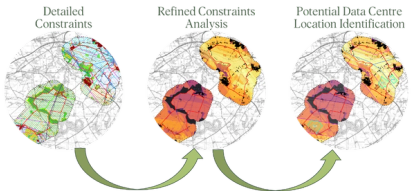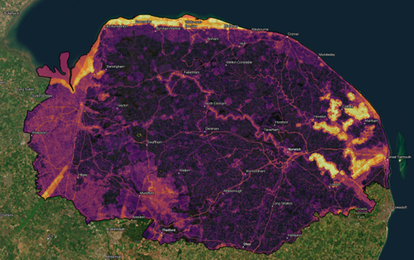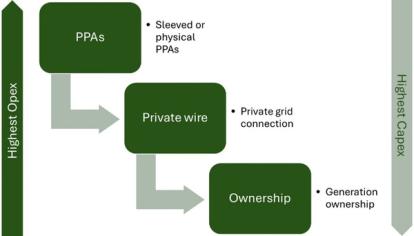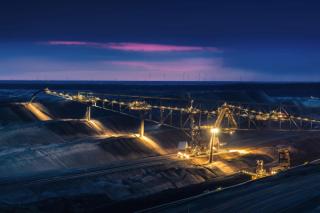
Cultural heritage: Indigenous and cultural heritage values driving sustainable development
by Flavia Kiperman
View post

The SLR data centre thought leadership series continues with the final instalment of a three-part focus on the power grid. For data centre operators in mature markets globally, SLR has developed a unique geospatial analysis tool informed by machine learning to accelerate site selection and weight drivers for selection and prioritisation. Additionally, where power is unavailable, we can support clients with alternative primary energy strategies leveraging our knowledge of microgrids and industrial decarbonisation.
Identifying optimal data centre locations requires a multidisciplinary approach that integrates geospatial intelligence, energy systems modelling, and regulatory foresight. SLR applies advanced geospatial analysis techniques, including machine learning-assisted mapping, to evaluate land availability, grid infrastructure, environmental constraints, and climate resilience. These datasets are used to inform infrastructure routing and site selection decisions, balancing planning risk with grid access potential.
SLR's geospatial workflow leverages supervised and unsupervised machine learning models to generate constraint maps and opportunity heatmaps. These models incorporate:
An example application in Norfolk demonstrates how machine learning-enabled heatmap modelling can visualise optimal zones for data centre development based on multi-criteria spatial analysis.



In regions with limited grid headroom, decentralised energy solutions offer viable alternatives. SLR conducts high-level techno-economic assessments of:
These assessments consider annual and lifetime OPEX, asset utilisation, and site competitiveness. Hybrid inverter systems are analysed using quasi-dynamic simulations to evaluate power quality and system utilisation under variable demand profiles. This enables investors to assess return on investment based on energy intake/offtake dynamics and hybrid system performance.
Decentralised energy solutions reduce reliance on constrained grid infrastructure and helpfully contribute to ESG and sustainability targets. We often see that phased deployment is possible, providing energy resilience in early development while full grid capacity is being secured providing for more optionality during development.
Electricity is one of the largest operating expenses for data centres, second only after paying for compute. Strategy is informed through our techno-economics-risk simulation of energy opex. In combination with our clients or third-party market forecasters, SLR can help assess long-term energy costs, annual energy cost variability, price volatility, resilience strategies, and carbon exposure. This analysis helps to inform primary data centre energy strategy, backup power planning, and contract structure. We work with clients to align assumption books prior to simulation. We can also simulate market changes where we combine inputs from the client / third party market curve forecasters to see, for example, what might happen when a power market reform takes place from a single market price to a nodal pricing mechanism. As lower nodal price signals manifest, this has the potential to relocate some of the centre of data centre gravity within a country’s geography to lower priced areas, and put incumbent low latency locations at an even higher price premium.
By combining cost modelling with infrastructure options, we empower clients to make informed trade-offs between CAPEX, OPEX, resilience, and sustainability for energy and cooling. We can model scope 1 and 2 carbon emissions as well as scope 1 and 2 water use as part of our energy-economics-risk simulation. This may be hybridised solutions as hybridised cooling solutions are offered to the market for AI as well as other data centre occupiers.

Grid connection is not just technical - it can also be a regulatory roller coaster. SLR supports clients through:
Our cross-jurisdictional experience ensures that infrastructure and operational considerations are embedded in early-stage planning, reducing delays and improving project viability.
Power availability is increasingly a gating factor for data centre development. SLR integrates geospatial, techno-economic, and regulatory analysis to streamline the path to Final Investment Decision (FID). Our approach supports direct grid connection, on-site generation, and hybrid energy models tailored to operator KPIs.

by Flavia Kiperman

by Jasper Schrijvers , Matthew Hoare

by Clodagh Connolly, Nicola Inge, Andres Schottlaender